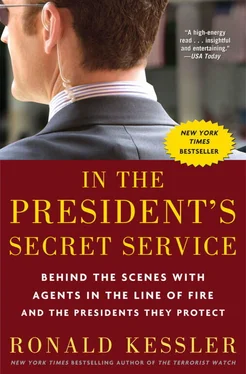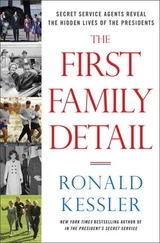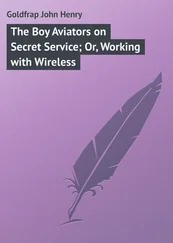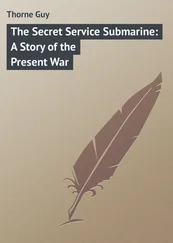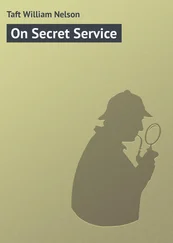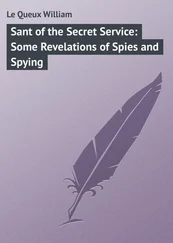Just inside is a single metal detector. On the wall in big silver letters are the words “Worthy of Trust and Confidence.” No mention of the Secret Service, not even on the visitor’s badge that the security officer issues. It is just when you get into the inner sanctum that you see a wall announcing the United States Secret Service Memorial Building, a reference to the thirty-five agents, officers, and other personnel who have died in the line of duty.
Inside, around a central atrium, catwalks link the rows of offices behind glass walls. For agents too pressed to wait for an elevator, open staircases within the atrium offer vertiginous looks down during the climb to another floor. The hallways are lined with candid photos of presidents being protected. A display commemorates those who have died in the line of duty, with spaces left for more.
An exhibit hall features first chief William P. Wood’s 1865 letter of appointment from the solicitor of the treasury, a copy of Lee Harvey Oswald’s gun, and examples of counterfeit bills alongside real bills.
The nerve center of the Secret Service is on the ninth floor. Here, in the Joint Operations Center, a handful of agents monitor the movements of protectees, whose code names and locations are displayed on light panels on the walls. When a protectee arrives at a new location, the agent who is assigned to intelligence and is traveling with him informs the Joint Operations Center. When protectees make unexpected trips, agents refer to the new assignment as a pop-up. Next to the Joint Ops Center, as agents refer to it, the Director’s Crisis Center is used to direct operations in emergencies such as the 9/11 attack.
When a suspicious call comes in to the White House and an agent at headquarters listens in, the agent may pretend to be another operator helping out.
“He is waiting for the magic word [that signifies a threat to the president],” a Secret Service agent explains. “He is tracing it.”
The Forensic Services Division matches a recording of the call with voices in a database of other threat calls. No threat is ignored. If it can locate the individual, the Secret Service interviews him and evaluates how serious a threat he may be. Agents try to differentiate between real threats and speech that is a legitimate exercise of First Amendment rights.
“If you don’t like the policies of the president, you can say it. That’s your right,” a Secret Service agent assigned to the vice president’s detail says. “We’re looking for those that cross the line and are threatening: ‘I’m going to get you. I’m going to kill you. You deserve to die. I know who can help kill you.’ Then his name is entered into the computer system.”
Arrests for such threats are routine. For example, the Secret Service arrested Barry Clinton Eckstrom, fifty-one, who lives in Upper St. Clair, Pennsylvania, after a Secret Service agent, alerted that the man was sending threatening emails, saw him type the following into an email he was sending from a Pittsburgh area public library: “I hate and despise the scum President Bush! I am going to kill him in June on his father’s birthday.” Eckstrom was sentenced to two years in prison and two years of supervised release.
If there is a problem at the White House, the Joint Ops Center can view the scene by remotely controlling surveillance cameras located outside and inside the complex. Any threatening letter or phone call to the White House is referred to the Secret Service. Most threats are in the form of letters addressed to the president, rather than emails or calls. Potential assassins get a great sense of satisfaction by mailing a letter. They think that if they mail it, the president will personally read it.
If a letter is anonymous, the Secret Service’s Forensic Services Division checks for fingerprints and analyzes the handwriting and the ink, matching it against the ninety-five hundred samples of ink in what is called the International Ink Library. To make the job easier, most ink manufacturers now add tags so the Secret Service can trace the ink. The characteristics of each specimen are in a digital database. Technicians try to match the ink with other threatening letters in an effort to trace its origin. They may scan the letter for DNA.
The Secret Service’s Protective Intelligence and Assessment Division categorizes individuals according to how serious a threat they may pose.
“There’s a formula that we go by,” says an agent. “It’s based on whether this person had prior military training, firearms training; a prior history of mental illness; and how effective he would be in carrying out a plan. You have to judge these things based on your interview with the subject, and then evaluate the seriousness of the threat.”
Class III threats are the most serious. Close to a hundred people are on the list. These individuals are constantly checked on. Courts have given the Secret Service wide latitude in dealing with immediate threats to the president.
“We will interview serious threats every three months and interview neighbors,” an agent says. “If we feel he is really dangerous, we monitor his movements almost on a daily basis. We monitor the mail. If he is in an institution, we put in stops so we will be notified if he is released.” If an individual is in an institution and has a home visit, “We are notified,” the agent says. “I guarantee there will be a car in his neighborhood to make sure he shows up at his house.”
“If a call comes here, if you get a piece of correspondence, any form of communication, even a veiled threat, we run everything to the ground until we are certain that we either have to discontinue the investigation or we have to keep monitoring a subject for a prolonged period of time,” says Paula Reid, the special agent in charge of the Protective Intelligence and Assessment Division.
If the president is traveling to a city where a Class III threat not confined to an institution lives, the Secret Service will show up at his door at some point before the visit. Intelligence advance agents will ask if the individual plans to go out and, if so, his destination. They will then conduct surveillance of the house and follow him if he leaves.
Even if a Class III threat is locked up, an intelligence advance agent will visit him. Nothing is left to chance.
“If they aren’t locked up, we go out and sit on them,” former agent William Albracht says. “You usually have a rapport with these guys because you’re interviewing them every quarter just to see how they’re doing, what they’re doing, if they are staying on their meds, or whatever. We knock on their door. We say, ‘How’re you doing, Freddy? President’s coming to town; what are your plans?’ What we always want to hear is, ‘I’m going to stay away’”
“Well, guess what,” an agent will say. “We’re going to be sitting on you, so keep that in mind. Don’t even think about going to the event that the president will be at, because we’re going to be on you like a hip pocket. Where you go, we go. We’re going to be in constant contact with you and know where you are the entire time. Just be advised.”
John W. Hinckley Jr., is still considered a Class III threat. In March 1981, he was found not guilty by reason of insanity in the shootings of President Reagan, Reagan press secretary James Brady, Secret Service Agent Timothy McCarthy, and D.C. police officer Thomas Delahanty. Since then, he has been confined to St. Elizabeth’s Hospital in Washington. But Hinckley is periodically allowed to leave the psychiatric hospital to visit his mother in Williamsburg, Virginia. If he visits Washington, his family notifies the Secret Service, and agents may conduct surveillance of him.
In contrast to a Class III threat, a Class II individual has made a threat but does not appear to have the ability to carry it out.
Читать дальше
